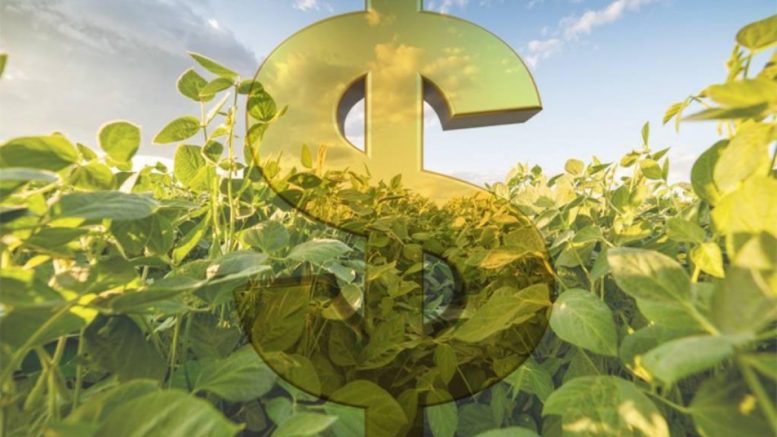“The main factor was the increase in input costs, mainly in the farm…”
Nicole Rennó is a professor in the economics department at the “Luiz de Queiroz” School of Agriculture – Esalq/USP, and a researcher at the Center for Advanced Studies on Applied Economics – Cepea, at Esalq/USP.
Rennó is an economist, M.Sc and Ph.D in economics from Esalq/USP.

Nicole Rennó, researcher at Cepea
AgriBrasilis – Agribusiness GDP fell by 4.22% in 2022. What caused this? What are the differences in the performance of agriculture and livestock and why?
Nicole Rennó – It is important to make some considerations about the Cepea’s and CNA’s calculation methodology. As there are differences between those and the IBGE’s (Brazilian Institute of Geography and Statistics) GDP methodology, this tends to generate a bit of confusion.
Cepea monitors the GDP of the entire agribusiness chain “inside and outside the farm”. IBGE, when talking about agricultural GDP, considers only agriculture, that is, only “inside the farm”. Agroindustries, for example, are part of the industrial sector for the IBGE.
For Cepea, the performances of industries “before and after the farm”, agriculture and agro-services are all computed. The result of the agribusiness GDP is an average of the performances of these segments.
Another difference is that the IBGE GDP variations that we are used to follow are volume variations. In Cepea’s and CNA’s methodology of the agribusiness GDP, our interest is to monitor the real income of the agribusiness agent. So, in addition to volume variations, we analyze and compute variations in the prices of agricultural and agroindustrial products, and variations in the costs of activities that make up the sector.
Agricultural GDP
What caused the drop in agribusiness GDP in 2022? This was a drop, it is worth mentioning, compared to the record GDP reached in 2021. This drop was concentrated on the agricultural side of the GDP, in the agriculture branch, mainly “inside the farm”, but also in agroindustries.
The main factor was the increase in input costs, mainly in the farm. 2022 was a year of high prices; agricultural and agroindustrial prices were at a high level, but costs rose at a much higher rate. This put pressure on the real income of agribusiness agents, that is what we are trying to represent when we demonstrate this 4.22% drop.
The soybean harvest loss weighed heavily. This is the main crop within the agricultural GDP. What happens to soybean has an important impact on the total result and, as we had a significant drop because of the weather, this was reflected in GDP.
We also had some agroindustries with lower production, such as the forestry industry. The production of wood, furniture, as well as clothing and textile industries performed poorly in terms of volume.
Livestock GDP
Livestock GDP increased. The sector showed relief in costs compared to the record that had been reached in 2021. At the same time, in 2022 the prices of several products were at a good level.
Just like soybean for agriculture, in the case of livestock, beef production is very important in the GDP and Brazil obtained production gains after a few quarters in a row with falling cattle production. This production rose in 2022 and boosted the GDP of the livestock sector.
AgriBrasilis – What is the participation of agribusiness in the inflation of 2022, that closed at 5.79% per year? Why do certain sectors point to agribusiness as the villain of inflation?
Nicole Rennó – Agribusiness played an important role in the inflation of 2022. Perhaps that is why certain sectors have called it the villain of inflation.
We had high inflation, above the target measured by the IPCA, and in fact the food and beverage group, more closely related to agribusiness, was among those that rose the most.
Agricultural and agroindustrial prices were at a high level, although not as much as costs, but designating agribusiness as the villain would somehow indicate that this price increase was under the farmer’s control, and this is not true.
Since 2019, we have had a sequence of climate and health problems, in addition to the war between Russia and Ukraine. The increase of food prices last year and the year before was global, not specific for Brazil. In Brazil, it arrived even more strongly because of the exchange rate, but all these factors I mentioned are beyond the farmer’s control.
Agribrasilis – The number of jobs in agribusiness has decreased by 17% in just one decade. Why did this occur? What is the qualification level in the sector?
Nicole Rennó – The number of jobs reduced during that decade was in the “inside the farm” sector, that fell by 15%.
Considering agribusiness as a whole, this drop between 2012 and 2022 was only 3%, because the number of people working in industries “before the farm” increased. The number of people working in agroservices has also increased. In agroindustries, this level has stagnated.
The drop in the employed population “inside the farm” is a movement that has been happening for some decades now, and it is not specific to Brazil: it happens along the development process of the countries. Agriculture tends to lose space as an employer as it modernizes, replacing work with capital, with machines, technologies that save work. This modernization has been happening in Brazilian agriculture. There is also a tendency for higher-income workers to prefer urban employment opportunities.
This downward movement in the number of jobs in agriculture and livestock should continue to happen in the coming years, although at decreasing rates.
Regarding the level of qualification in the sector, it is still low compared to the average of the Brazilian labor market. Proportionally, we have a lot more people in agribusiness educated up to elementary school and much less people with higher education, compared to the Brazilian scenario.
On the other hand, in the last decade this level of qualification has grown much faster in agribusiness than in Brazil as a whole, that reflects the modernization of the sector, and the demand for more qualified workers, who know how to deal with new technologies, with all the complexity of management that exists in agriculture today.
AgriBrasilis – What is the current situation of the agribusiness labor market?
Nicole Rennó – In the last two years, the agribusiness labor market has performed well. This is because of the strong recovery after the initial impact of the pandemic and as a result of the favorable situation that has marked the sector.
With regard to GDP, the years 2020 and 2021 were the best biennium in our historical series. We had records of profitability, of real income for the farmer, who is the agribusiness agent. This, of course, benefited the labor market as well.
The agribusiness labor market is currently in a positive situation and we expect it to remain stable throughout 2023.

READ MORE:
Brazil-Chile Trade Exceeds US$ 13 Billion

